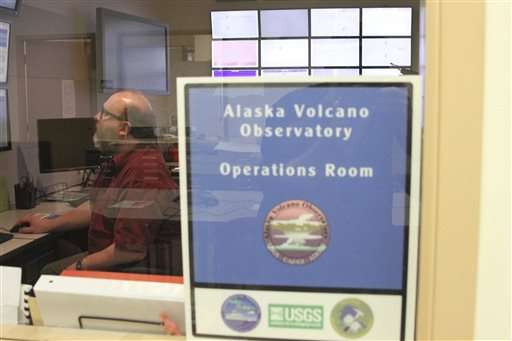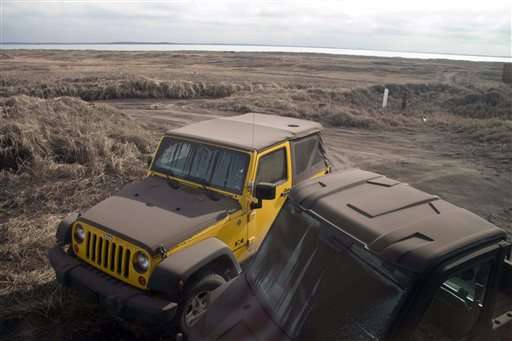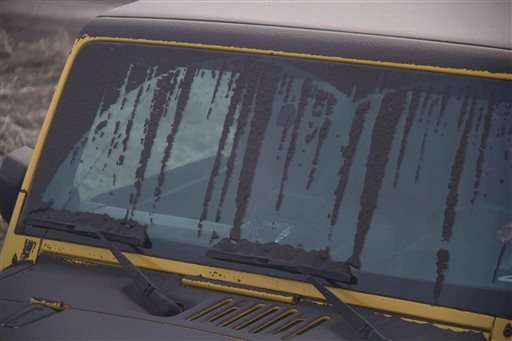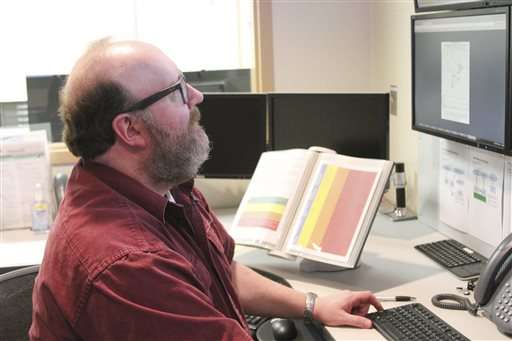Alaska air traffic resumes as volcano eruptions wane (Update)

A remote Alaska volcano rumbled and sputtered Wednesday but was no longer spewing the massive ash clouds that disrupted airline traffic earlier in the week.
Researchers observed intermittent puffs of ash from Pavlof Volcano, but they weren't going much higher than the summit, said U.S. Geological Survey geologist Chris Waythomas, who is part of the Alaska Volcano Observatory.
"There's still elevated seismicity, but we haven't seen anything conclusive for ash emission," he said.
The volcano 625 miles southwest of Anchorage on the Alaska Peninsula erupted Sunday and sent an ash cloud soaring to 37,000 feet.
The cloud drifted across interior Alaska and by Tuesday had crossed into northern Canada.
Some of the ash rained on villages, turning rooftops and car windows black. Nelson Lagoon urged residents to stay inside for a time as one-eighth to two-thirds of an inch of ash fell on the tiny community about 55 miles northeast of the volcano.
Volcanic ash is sharp and abrasive and can cause jet engines to shut down.
Alaska Airlines canceled 41 flights Monday and 28 flights Tuesday, but normal service to six Alaska communities resumed Wednesday, spokeswoman Bobbie Egan said in an email.

"We've also added one extra section between Anchorage and Nome and one extra section between Anchorage and Kotzebue to get passengers and cargo out to those communities," she said.
Pavlof is one of Alaska's most active volcanoes. Historically, eruptive episodes have ended abruptly or trickled on for years, Waythomas said.
"The one thing I think we've learned so far with the eruptions of Pavlof is that when it shuts off, it shuts off," he said. "It really quiets down."

Pavlof erupted intermittently for more than two years, from April 1986 to August 1988. Like Kilauea Volcano in Hawaii, Pavlof has an open magmatic system, Waythomas said.
"There's a big supply of magma and it's easy for it to get to the surface," he said.
An explosion that sends ash into the air typically is governed by the amount of gas in the magma, he said.

The volcano observatory lost one of its seismic stations in Sunday's eruption. The doghouse-size fiberglass huts hold electronics and batteries inside and an antenna mast and solar panels outside, which allow it to transmit data.
The station was on the north side of the 8,261-foot conical mountain.
Lava fountains at the summit produce piles of spatter. The hot rock material builds up, becomes unstable and collapses.
"They flow down the flanks and they're like little chain saws," Waythomas said. "It was likely something like that probably hit that seismic station."
Clouds surrounded the mountaintop Wednesday. The observatory has to rely on seismicity and infrasound, or low-frequency sound, to detect eruptions.
"There's probably some lava fountaining occurring right at the summit," Waythomas said. "These little explosions are still happening. So it's still erupting, but it's a really reduced level."
© 2016 The Associated Press. All rights reserved.














